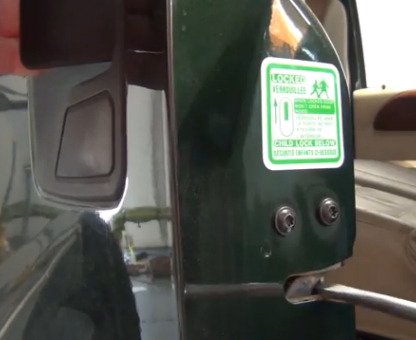Water pumps still work when the seal leaks as long as there's still coolant in the system.
From reading your description, the impression I get is the mechanic was making a lot of assumptions based on previous experience and not on a thorough diagnosis. One point of confusion is overheating can cause cylinder heads to warp, then the head gaskets will leak, but a leaking cylinder head gasket can also cause overheating. It can be hard to know which occurred first. It IS possible for a water pump to stop working due to a broken or corroded impeller, but that is not common. There wouldn't be any leaking due to that.
You said the temperature gauge wasn't working. Do you mean it was known to be broken or it was staying on "cold"? If it stayed on "cold", then suddenly went up to "hot", that would point to a leaking cylinder head gasket and not a failed water pump. When the head gasket leaks, combustion gases can pool under the thermostat keeping it closed. Thermostats only open in response to hot liquid, not hot air. Temperature gauge sending units also need to be immersed in liquid to transfer the heat to the sensor. Those units always sit right next to the thermostat. If air pooled there, the thermostat would not open so the coolant would not be allowed to flow to the radiator. The gauge would show "cold" while the engine was overheating.
Once some hot coolant splashed onto the thermostat, it would open and the coolant would flow freely to the radiator. THAT'S when the temperature gauge would suddenly shoot up to "hot".
This also has nothing to do with the coolant level. If the level is low, that is just one more in a list of potential observations. If a head gasket has a bad leak, you will often see bubbling in the reservoir. That can look like overheating, which it might be doing, but if the engine isn't overheating yet there won't be any steam associated with those bubbles. Your mechanic can do a chemical test at the radiator or reservoir to verify a leaking head gasket. It's the air in those bubbles that holds the clue. Even if there's no air bubbles the test usually is still pretty accurate.
As for the Check Engine light, if the engine stalled, there should be a diagnostic fault code stored in the Engine Computer. There's over a thousand potential fault codes and only those that could adversely affect emissions must turn on the Check Engine light. There are different levels of severity that can be identified by if and when the light goes off, but by far the most serious is when it is flashing. That means stop the engine right away because too much raw fuel is going into the exhaust system where it will burn and overheat the catalytic converter.
The only thing I can definitely agree with your mechanic is, "they said they aren't sure what all is wrong". Reading the fault codes is the place to start, then the chemical test to look for a leaking head gasket. If no leak is indicated, the cause of the overheating must be diagnosed. If there was three or four minutes between when you saw the temperature gauge on "cold" and "hot", and you were in stop-and-go city traffic, the cause could be as simple as a failed radiator fan. In that case you can provide your mechanic a valuable clue by running the heater on full-hot. If the air from the heater is really hot, the radiator is not giving up the heat, typically due to a fan that isn't turning on. If the air is cold when the engine is overheating, the coolant isn't circulating, including going to the radiator. That is typical of a leaking head gasket, or less-commonly, a thermostat stuck closed or a slipping / loose belt that drives the water pump.
Sometimes it's hard to know which came first and you just have to fix things as they show up. We'd always like to know what caused what so it doesn't happen again, but that isn't always possible. That makes it real hard to provide an accurate estimate for repair. Some shops include every possibility they can think of so regardless what they find, they don't have to call you and tell you it's going to cost more, but then they run the risk of you getting a lower second opinion from somewhere else and they lose the entire job. Some shops give you a lower estimate for just what is obviously wrong and quick to diagnose so they get the job, then, once they're well into it, they call you with all the other things they found. That's okay, I guess, if they tell you up front there could be more wrong. I prefer giving high estimates so I don't have to wait for approval to order more parts, and I like to surprise people with a final bill that's lower than expected.
Tuesday, October 8th, 2013 AT 1:22 AM


